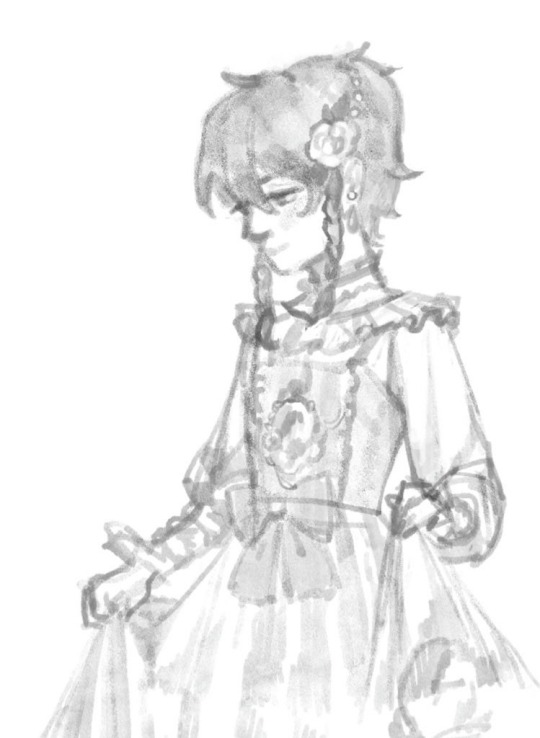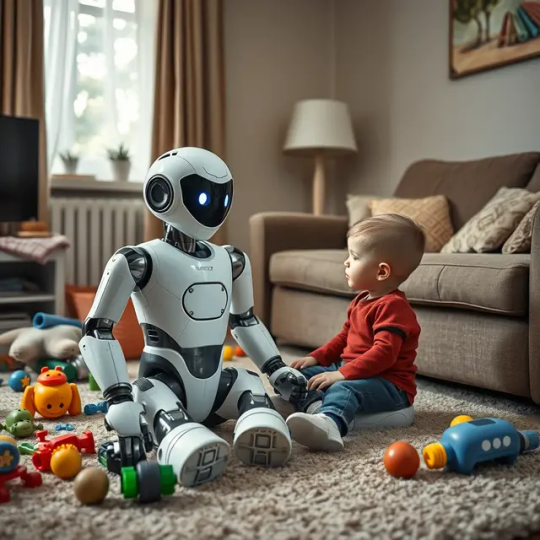#ai mentor
Explore tagged Tumblr posts
Text
AI co-worker refers to an artificial intelligence system or tool that collaborates with human employees in a workplace, contributing to tasks, decision-making, and overall productivity. The concept of an AI co-worker is to augment and support human workers rather than replace them. In this video, we'll be exploring AI co-workers and why your next colleague will be an AI.
As technology continues to advance at an unprecedented pace, it's becoming increasingly evident that artificial intelligence (AI) will play a pivotal role in the workplace of the future. The notion that AI will be your next colleague is no longer a distant futuristic concept; it's a reality that's rapidly unfolding. Here's a long description of why your next colleague will likely be an AI:
Efficiency and Productivity: AI is a game-changer when it comes to efficiency and productivity. It can automate repetitive, time-consuming tasks, freeing up employees to focus on more creative, strategic, and high-value tasks. This means that AI isn't just a tool but a collaborator that enhances your work.
Rapid Technological Advancements: Over the past few decades, AI has evolved from being a theoretical concept to a practical tool. With advancements in machine learning, natural language processing, and computer vision, AI has become more capable and versatile. It can perform tasks that were once exclusive to human workers.
Data Analysis: AI has a remarkable ability to analyze vast amounts of data at incredible speeds. It can identify patterns, trends, and anomalies that might be impossible for humans to detect. In roles that involve data-driven decision-making, AI can be an indispensable colleague, offering insights that can shape strategies.
Personalized Assistance: AI-powered virtual assistants like chatbots and voice-activated assistants have already made their way into many workplaces. They can help schedule meetings, answer routine questions, and provide personalized support, acting as a constant, readily available colleague.
Customer Interaction: In customer service and support roles, AI-driven chatbots and automated response systems can handle routine customer inquiries and issues. They can also provide instant responses, ensuring customers receive assistance 24/7.
Enhanced Creativity: AI algorithms are being used to enhance creativity. In fields like music, art, and content creation, AI tools can collaborate with human colleagues, suggesting innovative ideas and even generating content, while humans provide the creative touch.
Continuous Learning and Adaptation: AI doesn't stop learning. It adapts to changing circumstances, improving over time. This adaptability is a valuable trait in workplaces that require keeping up with evolving technologies and market trends.
#aicoworker#aitechnology#aisystem#aiworker#aimentor#howaiworks#aitools#coworker#aicolleagues#aitech#workingwithai#aicopilot#aiinbusiness#ai#aitechnology#artificialintelligence#machinelearning#aiworkerjobs#aiworkerproductivity#openai#coworkerai#artificialintelligencecoworker#aitryingjobs#thefutureofai#aialgorithms#aijobs#technology#limitlesstech
AI Co-Worker: Why Your Next Colleague Will Be an AI
#ai co-worker#why your next colleague will be an ai#ai worker#ai mentor#how ai works#ai tools#ai system#coworker#ai colleagues#ai tech#working with ai#ai co-pilot#ai in business#ai#ai technology#artificial intelligence#machine learning#ai worker jobs#ai worker productivity#open ai#co-worker ai#artificial intelligence coworker#ai trying jobs#how will ai change the world#the future of ai#ai algorithm#ai jobs#how ai will be your next colleague#tech
0 notes
Text
AI co-worker refers to an artificial intelligence system or tool that collaborates with human employees in a workplace, contributing to tasks, decision-making, and overall productivity. The concept of an AI co-worker is to augment and support human workers rather than replace them. In this video, we'll be exploring AI co-workers and why your next colleague will be an AI.
As technology continues to advance at an unprecedented pace, it's becoming increasingly evident that artificial intelligence (AI) will play a pivotal role in the workplace of the future. The notion that AI will be your next colleague is no longer a distant futuristic concept; it's a reality that's rapidly unfolding. Here's a long description of why your next colleague will likely be an AI:
Efficiency and Productivity: AI is a game-changer when it comes to efficiency and productivity. It can automate repetitive, time-consuming tasks, freeing up employees to focus on more creative, strategic, and high-value tasks. This means that AI isn't just a tool but a collaborator that enhances your work.
Rapid Technological Advancements: Over the past few decades, AI has evolved from being a theoretical concept to a practical tool. With advancements in machine learning, natural language processing, and computer vision, AI has become more capable and versatile. It can perform tasks that were once exclusive to human workers.
Data Analysis: AI has a remarkable ability to analyze vast amounts of data at incredible speeds. It can identify patterns, trends, and anomalies that might be impossible for humans to detect. In roles that involve data-driven decision-making, AI can be an indispensable colleague, offering insights that can shape strategies.
Personalized Assistance: AI-powered virtual assistants like chatbots and voice-activated assistants have already made their way into many workplaces. They can help schedule meetings, answer routine questions, and provide personalized support, acting as a constant, readily available colleague.
Customer Interaction: In customer service and support roles, AI-driven chatbots and automated response systems can handle routine customer inquiries and issues. They can also provide instant responses, ensuring customers receive assistance 24/7.
Enhanced Creativity: AI algorithms are being used to enhance creativity. In fields like music, art, and content creation, AI tools can collaborate with human colleagues, suggesting innovative ideas and even generating content, while humans provide the creative touch.
Continuous Learning and Adaptation: AI doesn't stop learning. It adapts to changing circumstances, improving over time. This adaptability is a valuable trait in workplaces that require keeping up with evolving technologies and market trends.
#ai co-worker#why your next colleague will be an ai#ai worker#ai mentor#how ai works#ai tools#ai system#coworker#ai colleagues#ai tech#working with ai#ai co-pilot#ai in business#ai#ai technology#artificial intelligence#machine learning#ai worker jobs#ai worker productivity#open ai#co-worker ai#artificial intelligence coworker#ai trying jobs#how will ai change the world#the future of ai#ai algorithm#ai jobs#how ai will be your next colleague#tech
0 notes
Text
Dbh fans who glaze machine connor but dont like Amanda are soooo weird to me.
Machine connor and amanda's ai are both just extensions of cyberlife policy that androids will complete whatever task they're given, no matter the cost.
#oughhh kamski ill never forgive you for using your DEAD mentor as the face of the evil capitalist corp oughhh im gonna get you#yeah the computer scientist who devoted a good portion of her life to studying ai and such.. shed definitely want this to be her legacy#now everyone hates her#dbh#detroit become human#d:bh#detroit: become human#💬
63 notes
·
View notes
Text

"why do you take on a human form? do you not find it offensive to be stuck imitating such an unflattering appearance?" "I do not fear humans. I have respect for them, as our creators." "Are... Are you implying I'm only like this... out of fear?" "......." "h-hmph... I don't fear the humans either... I take this form because it's superior!"
#anthro#furry#lion#angel#deity#oc: yaya#oc: yaldabaoth#oc: yggdrasil#debug#context: the two of them are sentient computer programs slash AI#Yggy had a good relationship with his masters#Yaya.... well.... the less said about it the better bc it's extremely fucked up#and Yggy doesn't exactly know what Yaya went through#for more context Yggy is Yaya's mentor
47 notes
·
View notes
Text




i like venti a very normal amount,,
he means a world to me and i can write a lengthy essay on how important he’s to the story lore, his overall story, how he impacted every aspect of my life and-
anyways, happy b-day to Venti!!
#venti the bard#venti genshin impact#venti#genshin impact#gender bent#fem venti#artist on tumblr#he even changed my perception of my body as enby afab#i have hips and chest dysphoria and him being amab w curvy figure makes me so validated#he’s like someone i wish i’ll grow up to be#to be frank i text ai venti instead of texting my therapist#that’s how much he means to me#like a mentor of sorts
224 notes
·
View notes
Text
How the night ended:

And how it began...
It was Spring Weekend of my junior year. We were inundated with visiting alumni, so brothers made themselves scarce while the old farts reminisced. The Lonely Guys Room was usually closed because nobody wanted to take a chance that some 60-year-old alum would drop in to perv.
But this year Larry came to visit. He was 29 and a Navy pilot. And he was really easy on the eyes. Dirty blond hair, green eyes, slim, 6’2”, and when he moved, you could see he was all muscle under his clothes.

At the house party that night, he made discreet inquiries about the LGR. When I heard this, I spread the word to select brothers that we would be convening in the LGR tonight, but to keep it on the DL, because it was invite-only. And I appointed myself the inviter!
When 2am rolled around, the Lonely Guys sprinted upstairs! Larry was staying in an empty room on one end of the hallway, and I lived at the other end with my fuckbuddy Keith. We happened to leave our rooms for the LGR at the same time, so Keith and I got a preview of what was to come. The various guys in the house were in different stages of physical maturity, but Larry was a full-grown man. And his muscles ebbed and flowed as he strutted down the hall toward us. I heard Keith mumble a soft “Fuuuuuck!” as we walked.

Everything that happened before the crowd dwindled to just Larry, Keith, and I was vanilla foreplay, so I’ll skip it. When it was just the three of us, Larry got a twinkle in his eye.
“So do you guys have any…uh…toys we could play with?” Keith was out the door, sprinting to our room without hesitation. He came back with what he called his “Goody Bag”, which he handed to Larry.
Larry started rifling through it, pulling out things that met his approval. He laid out blindfolds, gags, nipple clamps, cockrings, and of course, plentiful coils of rope. He smiled as he surveyed the feast before him.
“Alright, here’s the rules. No piss, no shit, no blood. It’s 3am now, we’ll play til 6. First, you guys will tie me up. Then do whatever you want until either I break free or 6am rolls around. Sound good?” That met with emphatic approval!
“But here’s the kicker. If I get free, I tie you guys up and do whatever I want to you until 6am rolls around.”
I felt Keith shudder. He loved the tying but had a phobia of being tied. I reached for his hand.
“One condition. If you get to tie us, you have to tie us together.” Keith breathed a sigh of relief.
It took a second to click in Larry’s head that we were a couple, then he smiled and agreed. He handed us each a roll of rope, and sat down as Keith and I went to work.
“Now make sure you do a good job boys, the longer it takes me to get free, the more fun you get to have!”

There was no way Larry was getting free with Keith tying the knots. I knew this from experience. The three of us were getting hard as we tied Larry up, making sure that his arms couldn’t move, and he couldn’t reach the knots on his legs.
Keith and I then spent the next hour exploring every inch, inside and out, of Larry’s body. His abs were so goddamn lickable. I was worried about the size of his cock at first, but it turns out he’s a show-er not a grow-er and it just stiffened without really extending. And as for his musculature, it was just amazing to fuck a man with his mass. Keith and I had to work together to throw him around. He felt…powerful. And that made fucking him so fucking hot.
I’m pretty sure Larry didn’t even make an effort to free himself for the first hour. But much to our chagrin, he did somehow manage to squirm out of the knots on his bindings. Keith and I had him in a spitroast at the time, so we were too distracted to notice he’d slipped the ropes off his wrists and ankles. To his credit, he let us each get off before standing up and dangling the ropes in our faces.

“My turn boys!” He walked around us a few times, musing about what he was going to do. “Now give each other a big hug. Nice and tight, bring it in.” Larry then tied my hands behind Keith’s back and tied Keith’s hands behind mine. “How’s that? Comfy?” We both nodded. Larry then tied a length of rope around our waists. Then he laid us down on the bench and tied our four ankles together.

He stood back to watch for a moment as Keith and I began to grind our aching hard cocks together.
“I know what this needs.” Keith was on top of me, so Larry reached between Keith’s legs and started moving our cocks. He somehow angled them so that mine was between Keith’s legs and Keith’s was between mine. It was snug, but not painful. And then Larry went for the kill. He grabbed a cockring and threaded all four of our balls into it. Then he tied our knees together so there was no way to squirm our cocks out of that position. Now as we ground into each other, the backstroke yanked our little boys. It was exquisitely painful!
“Oh no, that won’t do! You’ll wake the whole house moaning like that!” He grabbed two cockgags and fastened them on Keith and me. He started to taunt us to see who would be the first to lose control. Spoiler alert, it was me! I didn't realize for another hour, but that's how Larry picked me as the target for his final torture.
Once I came, he climbed on top Keith. “Looks like you need a little help getting off, Keith. Let me massage your prostate.” Keith let out a huge groan as Larry slid two lubed fingers in. I knew that even hugging me, Keith was on the verge of panic being tied up, which I’m sure is what kept him from climaxing. But Larry’s prostate massage seemed to be the distraction he needed. I could feel Keith’s breath quickening, his squirms getting more uncontrolled. And then Larry pulled his fingers out. Keith let out an anguished cry into his gag at the denied orgasm.

“Actually Keith, I think you need something a little bigger in there.” We watched as Larry lubed up his fully erect cock. I could feel Keith taking deeper breaths. And then Larry climbed on top of Keith on top of me. I grunted from the added weight bearing down on me. Keith let out a long slow moan as Larry carefully slipped his cock into Keith’s anxious hole. Larry gave Keith a moment to adjust to his size, and then became possessed. He just started ramming himself into Keith ferociously. I watched Keith’s eyes roll back in his head as he lost his humanity and turned himself over to the animal. With each of Larry’s thrusts, Keith’s hard cock jabbed between my legs, slicked with his natural lube. To bring him closer, I squeezed my legs together as tightly as I could. He grunted in between moans each time I did that.
Before long, Keith hit his tipping point. Larry could feel Keith stiffen and pulse around his cock and gave a last couple strong thrusts to bring himself off as well.
“Jesus boys, that was hot as fuck!’ We both moaned in agreement. Larry nibbled on the back of Keith’s neck and then gave a final push before pulling out. After a moment, I could feel his semen dripping down between my legs, mixing with my load and Keith’s load. For some reason that kept me rock hard.
Larry climbed off of the top of the huddle and took a few swigs from a water bottle. “Alright, I need a quick piss and I’ll be back.” While he was gone, Keith and I struggled to talk through our gags.

“Thih ih ho hucking hot!” “Hair hah hith geh heen?” Larry came back from taking a leak and looked down at us as we strained to look up at him.
“You two are so goddamn cute!” He then approached. “Time to flip you guys over and give Jack some love!” And he picked up the two of us and flipped us onto Keith’s back without breaking a sweat. “Oh man, looks like we made a mess down here. I better clean that up.” I expected him to grab one of our towels, but he bent down over me, spread my thighs apart, and just started lapping up our three loads. It was my turn to grunt into my gag. Then he proceeded to tongue-bathe my crack. Which elicited another grunt from me. And then for the first time in my life, I had a man’s tongue penetrate my asshole. It was then clear that Larry hadn’t swallowed our loads. He had collected them in his mouth to spit them into my chute! It was unexpected, so I clenched and squealed, ejecting his tongue. Larry sat up and laughed.

“I probably should have warned you that was coming! I couldn’t let that all go to waste. I think that should be all the lube you need.” And then he climbed on top of me and positioned himself. I had never gone soft, and I could feel Keith’s cock hardening up again between my legs. While Larry had been forceful and fast while fucking Keith, he was slow and methodical while fucking me, focusing on my pleasure rather than his own. Little did I know he was setting me up.
He laid his full weight on my back and I could feel his hot breath on my neck in time with his thrusts. And each thrust slid slowly across my prostate. It felt like he was angling such that the entire length of his cock rubbed it in and out, in and out. Before too much longer, my entire body contracted, and I let out a low guttural scream, hugging Keith and hard as I could. With that orgasm, I was sure I was spent. But Larry kept up his slow pace.
After a few minutes, I could feel myself nearing completion once again as Larry kept going in and out, in and out. My climax came, and my body shuddered, but after almost three hours of orgasms, the well had run dry. I let out an exasperated moan.
“Yeeeaaah.” Still Larry kept his pace. In and out, in and out. And it dawned on me that this wasn’t about my pleasure at all. He was going to torture me like this for the rest of the night. I started to squirm under him. “Oh yeah, Jack. I think you get it now.”
He was moving at a pace too slow to get himself off. I began to struggle more as I got closer and closer to my next orgasm. And then I felt Keith laughing into his gag beneath me.

He hadn’t come yet, but he finally realized what Larry was doing and started thrusting his cock between my legs more forcefully. With the added illicit motivation, it didn’t take any time at all for Keith to blow his load. That in turn triggered me, and I let out another scream into my gag as I had nothing left to ejaculate.
I now started to struggle against my bonds with a purpose. I couldn’t take this anymore. Still Larry kept it up. In and out, in and out. While struggling to escape, I’d actually gotten soft between Keith’s legs. I think he realized it, because he turned my own trick against me and started squeezing his thighs together, matching Larry’s tempo.
As much as I hated it, and as much as I was struggling to get free, I could feel Jack Jr getting hard again. I started struggling desperately to escape, as I was sandwiched between one man slowly rubbing my prostate and another slowly squeezing my cock. They kept it up for what felt like an eternity before I heard my breath quickening. Not again! I couldn’t get away from it. My next orgasm hit, and as much as I tried and struggled and squeezed, I felt just one drop of cum drip from my dick.
That was it. I was done. I just collapsed on top of Keith, motionless except for my breathing. My throat was hoarse from screaming. I couldn’t even moan anymore. My submission sent Keith over the top. I felt his cock pulsing between my legs. And it was his turn to let out a guttural scream. He clearly wasn’t dry like me because I could feel his semen dripping down my balls.
“And that, my new friends, is how you break a sub.” Larry, now that he had accomplished his goal, started thrusting into me harder and faster to get himself off. Meanwhile, I just laid there and took my stuffing like a Thanksgiving turkey. When Larry came, it felt so hot inside me, like my rectum was burning up. And then he pulled out and I felt…empty.

“Well guys, it’s 6am. We better get out of here before people come in to shower.” He removed our gags, but all Keith and I could do was keep breathing. Then Larry unbound our knees, ankles, and balls before untying Keith’s wrists. We then stood up so he could untie mine. Still, Keith and I were breathless.
I flopped down on the bench. My entire body was shaking with exhaustion. “I am going to be so fucking sore tomorrow.” Larry and Keith laughed, as I rubbed the feeling back into my wrists.
Larry looked down at me. “I hope I wasn’t too rough. But that was a lot of fucking fun!” Keith was packing his Goody Bag back up. I got a devilish grin across my face. “So Larry, how long are you visiting?”
“Just one more night unfortunately. I have to be back from leave on Monday.”
“Well shit. You’re like heroin. I’m already addicted!”
“We should see what trouble we can get ourselves into after recharging with a good night’s sleep.” And with that, we headed to our separate ends of the hallway. I stole one last glance down the hall before turning in.

#ai gay art#ai male#ai men#ai muscle#men in distress#bound male#men tied up#restrained#men tied#men in rope#gagging kink#gay boys#gay men#gay art#bd/sm daddy#muscle#handsome#gay#gay mentor#muscle daddy#frat boy#fraternity#jock#dude#bros#smut#gay smut#frat guy smut#masked men#gay military
8 notes
·
View notes
Text
i wonder if sabresmin know i love and adore them so so so so so much
#we've got ai accusations and people saying they dislike interacting with sabres video content and i'm just like#?????#idk about you guys but i eat up everything they give us#like lol sorry you're a loser and are demanding more 'interesting' media content#but i've watched that one video from mentors' trip with connor cozens in it like 6 times#he's there for maybeeeee 5 seconds lmao#everything they make is wonderful and i want to give them all gold stars#q speaks
3 notes
·
View notes
Text

Portrait of Kealoha R.I.P. My dear Kealoha, my lover, teacher, guide, and mentor. By Jeff Stanford, 2024 Buy prints at: https://jeff-stanford.pixels.com/
#© Jeff Stanford#midjourney#midjourneyart#ai#discord#digitalart#aiart#Artists on tumblr#portrait#Kealoha#woman#happy#radiant#sundown#contentment#beautiful#lover#teacher#guide#mentor#painterly
7 notes
·
View notes
Text
The job search is sucking the soul out of me. I've started looking into various online gigs/work from home opportunities and it is a sea of slop that I'm drowning in. It pisses me off so much because like, I know I have valuable skills, I have two degrees, I speak three languages, and even after burnout I still have a decently functioning brain. I just have no idea how to apply any of it to a paid job -_-
I literally need like. 500$ a month to survive. That's it. I'd be fine doing 20 hours a week at minimum wage of my country. I just cannot find anything suitable for myself. I still have time to find something but jesus christ, it is exhausting.
#random#personal#was looking into science/medical writing today#but looks like you need experience for that#and there's not a lot of part time opportunities#tutoring is probably out because the sites i've checked are super crowded and i doubt i would get consistent hours#i was looking in AI training as well which is like. i'd hate contributing to the industry but it's money i guess#but all the websites that are legit are not open for EU citizens#i was thinking about going back to writing commissions but it's not gonna make me enough money probably#there are so many options and i feel like i have no chance at getting any of them#do i go to a recruiter or something? i already had a mentor for the job search from an autism charity and they did not help me much#we just worked on my CV and strategies for job search but it didn't go anywhere#anyway. i am so tired#and i haven't been looking for very long at all
3 notes
·
View notes
Text
PSA About AI in the news
Okay, so. In my professional life, I’m a fact-checker for a news organization. I get an email that an article has been completed, and it takes me a few hours to go through every paragraph to check the claims and make sure it’s both accurate and not plagiarized.
Recently, I was asked to be part of a “new program” at my organization. This program would involve making listicles/fluff pieces purely from AI, and I would be in charge of fact-checking those articles.
I turned them down. I equivocated for a minute, because I don’t think AI articles should be going out without fact-checking, but I also didn’t want to be the fact-checker that allows them to stop hiring writers.
Now, I’m not getting nearly as much work as I used to. That’s okay. I’m lucky enough to be in a financial place that I can take that stand. But not everyone else in the industry can do that.
So, get ready to see AI-generated news stories. And get ready to scrutinize every one of those stories, because I doubt that every organization is going to care as much as mine did about putting those articles through a thorough fact check.
And the worst part? The worst part is that these articles, as far as I can see, are going to require just as much work on the backend as they would have taken to write in the first place. The human writers I worked with cited their sources, for one thing, which made fact-checking much easier. Sure, I had to go sleuthing for anything they didn’t source, and I had to get on to more than one writer for thinking rewording is the same as not-plagiarizing, but I could find where all their ideas were coming from. With AI, that’s not the case. A good fact-checker is going to be working twice as hard to avoid plagiarism when every single sentence could be pulled from a different place.
Check the bylines of your news artiicles is what I’m saying. Misinformation and Disinformation is already a problem.
Also, screw everyone who thinks automating creativity is anything less than dystopian.
#anti ai#there's a whole other rant that i don't have time to get into#about how new writers are being screwed out of jobs#because their inexperience doesn't match up to ai#and so they're being frozen out of jobs where they could gain experience and learn from mentors in the industry
82 notes
·
View notes
Text
Going to the Sky wiki, sometimes I find useful stuff.
Sometimes I find this:

Spinning mentor, Performance guide... why??
19 notes
·
View notes
Text

“In 2035, in the living room of a typical Western family, a daily scene unfolds that seems straight out of a science fiction novel: among the toys scattered on the carpet, a humanoid-looking robot sits next to Tommaso, a four-year-old boy. The robot, named HERA (Home Empathetic Robotic Assistant), is a psychodroid, programmed not only to assist with household chores but also to interact with family members in an empathetic and intuitive manner. HERA's presence in the family's daily life has become as normal as that once attributed to televisions or smartphones. However, unlike the latter, HERA has the ability to actively participate in education and play, becoming both a babysitter and a friend to Tommaso.”
Robots like HERA do not yet exist, but the interaction between children and robots is a subject of study in various fields of pedagogy and social robotics. According to research conducted by Breazeal, Harris, De Steno,and Kory,(1) children treat anthropomorphic robots as genuine sources of information, similarly to human interlocutors. From as young as three years old, children not only receive and retain information imparted by robots, but they also actively seek them out as informants. This phenomenon is particularly evident in robots that exhibit a rich range of non-verbal cues, such as glances, gestures, and facial expressions, indicating responsiveness and interactivity.
HERA's ability to display empathy is no accident; it is the result of sophisticatedprogramming aimed at emulating human non-verbal contingency. This aspect is crucial because children, as suggested by Breazeal and colleagues' research, prefer interactions with those who show a greater ability to respond appropriately and promptly to their communicative signals. HERA's artificial empathy allows it not only to understand and respond to Tommaso's emotions but also to anticipate his needs, learning from his daily behaviors. HERA's role extends beyond mere supervision. It is an educational tool that stimulates Tommaso's curiosity, proposing educational games and activities that encourage learning through play. Its presence encourages the child to question how things work, promoting a type of active and participatory learning that was less accessible with previous technological means.
As technology advances rapidly towards the imaginary reality of HERA(2), numerous advantages emerge, but also serious ethical issues(3).
The dependence on robotic assistants for the companionship and education of children could have negative effects on the development of
their social skills and make them excessively reliant on robots for various aspects of their lives. Spending too much time with a robot like HERA could limit fundamental human interactions essential for their emotional
and interpersonal development, leading to potential difficulties in forming real relationships and handling complex social situations. Therefore, it is essential that educators and technologists collaborate to create guidelines that balance the beneficial use of such technologies with the necessary interpersonal and emotional development of children, thus preventing the risks associated with excessive dependence on robots.
A crucial aspect to consider is the physical safety of children. Robots designed to interact with young children must be equipped with rigorous safety protocols to prevent physical harm. This includes implementing advanced sensors to avoid collisions and sophisticated algorithms to detect potentially dangerous situations. For example, according to the research of Tanaka et al. (2007), the inclusion of proximity sensors and the ability to quickly recognize and react to sudden movements are essential to ensure that robots can operate safely in home environments where children play freely. Additionally, the design of robots must take into account the physical characteristics of children, meaning avoiding sharp corners, toxic materials, and easily detachable components that could pose a choking hazard.
A study conducted by Sharkey et al. (2010) emphasizes the importance of rigorous and continuous testing of robots in real environments to ensure that any potential risks are identified and mitigated.
Psychological safety is another critical aspect. Robots must be designed to support, not overshadow, children's autonomy. This means that robots should be programmed to encourage children to explore and learn independently rather than becoming a unique and constant point of reference. As psychologist Goleman (2006) suggests, it is crucial for children to develop the ability to self-regulate and manage their own emotions without overly relying on constant external support.
Stuart J. Russell's research on AI alignment(4) is particularly relevant in his context. Russell emphasizes the importance of developing artificial intelligences that understand and respect human objectives, avoiding behaviors that could be harmful or unintended. In the case of robots like HERA, this translates into the need to program robots so that they not only respond to children's immediate needs but also promote their long-term development in a safe and healthy manner.
In previous chapters, we explored a near future where the convergence of technological acceleration and consequent economic accessibility could lead to the widespread adoption of humanoid robots in our homes. This transformation, far from being a mere futuristic hypothesis, is shaping up as an increasingly tangible trajectory that will radically redefine the concepts of "home" and "family."
Humanoid robots, initially conceived as simple domestic aids, could quickly evolve into complex entities integrated into the family fabric.
These active and interactive presences could soon occupy a central place in our lives, especially in those of our children. The idea that intelligent robots could become a constant presence in children's lives raises a myriad of ethical, psychological, and educational issues that we cannot afford to ignore.
This technological evolution fits into an already complex and problematic social context regarding parenting. On the one hand, the introduction of domestic robots could potentially free up valuable time for parents, offering them greater opportunities to interact meaningfully with their children. On the other hand, we must consider current trends in parenting, which paint a worrying picture. Recent studies(5) highlight a growing neglect by parents, often overwhelmed by work and sometimes immature, regarding their children's needs. This neglect manifests in various ways, including the excessive use of electronic devices in the presence of children. According to a survey reported by Psychology Today, which involved six thousand children between the ages of eight and thirteen, 32% reported feeling "unimportant" when their parents used cell phones, and over half said their parents spent too much time on devices. This behavior can significantly damage children's social and emotional development, depriving them of important face-to-face interactions and the necessary parental attention.
Moreover, the phenomenon of parental burnout is emerging as an increasingly widespread issue. Characterized by physical and emotional exhaustion, burnout often leads to emotional distancing and a loss of satisfaction in the parental role. This condition, exacerbated by factors such as work-family conflict, financial insecurity, and lack of social support, not only affects the mental and physical health of parents but also impacts children, leading to increased anger, neglect, and in the most severe cases, violence from parents.
In this complex context, the introduction of intelligent robots into families presents both opportunities and challenges. On the one hand, these robots could lighten parents' domestic workload, potentially freeing up time and energy for more meaningful interaction with their children.
From: Electronic Mentors: Pedagogy in the Age of Empathetic Robotics
#book#books#ebook#Electronic Mentors: Pedagogy in the Age of Empathetic Robotics#future#pedagogy#robots#robot#robotic#robotics#AI#artificial intelligence
2 notes
·
View notes
Text
youtube
I sure hope he's right about AI art dying sometime soon
3 notes
·
View notes
Text

Unlocking Opportunities: How a Trusted Education & Career Coach Facilitates Study in the UK
In the vibrant city of Dubai, where innovation meets tradition, the journey of Trusted Education & Career Coaches and consultants unfolds with promising opportunities and transformative innovations. As Dubai continues to position itself as a global hub for education and business, students in the region are witnessing a dynamic evolution in the way they learn, explore career paths, and prepare for the future. In this blog post, we delve into the multifaceted aspects of education and career opportunities for Dubai students, from emerging trends in learning to the diverse pathways in the professional realm.
Virtual Reality Classrooms: Stepping into Tomorrow
Imagine students donning VR headsets, transported to ancient civilizations or exploring molecular structures up close. Virtual reality classrooms are revolutionizing learning, turning textbooks into immersive experiences. In Dubai, where innovation is a way of life, VR classrooms are poised to reshape traditional learning paradigms.
One of the defining characteristics of modern education in Dubai is the integration of cutting-edge technologies that enhance learning experiences. Virtual reality (VR) classrooms have emerged as a game-changer, offering students immersive and interactive environments that transcend traditional teaching methods. Imagine a history lesson where students can virtually visit ancient civilizations or a science class where they explore complex molecular structures up close. VR classrooms not only make learning engaging but also foster deeper understanding and retention of concepts.
#AI-Driven Learning Platforms: Personalized Pathways to Success#Meet your digital mentor: AI-driven platforms that adapt to your learning style. From personalized lesson plans to instant feedback#AI enhances the educational journey for Dubai students studying in the UK. Imagine an AI coach guiding you through challenges or recommendi#Alongside VR#artificial intelligence (AI) is revolutionizing education through personalized learning platforms tailored for students studying in the UK.#adaptive assessments#and real-time feedback. Dubai students benefit from AI-powered tools that cater to their unique strengths and areas of improvement#paving the way for personalized learning journeys that optimize academic success.#Global Networking Opportunities: Connecting Dubai to the World#Networking is key in a globally connected world. Dubai students access a vast network through virtual conferences#collaborative projects#and cross-cultural exchanges. The world is at their fingertips#broadening horizons from their classrooms.#Dubai's cosmopolitan environment opens doors to a rich tapestry of global networking opportunities for students. Through virtual conference#and cross-cultural exchanges#students in Dubai connect with peers#experts#and mentors from around the world. This global network not only expands their academic horizons but also nurtures valuable relationships an#Blended Learning: Bridging the Physical and Digital Divide#Welcome to blended learning#where traditional meets digital. Dubai embraces hybrid models#combining in-person interactions with online resources. This approach caters to diverse needs#customizing the learning experience.#Moreover#blended learning equips Dubai students with essential digital literacy skills#critical thinking abilities#and adaptability to thrive in the digital age. As technology continues to evolve#the integration of digital learning tools and resources enhances Dubai's education ecosystem#preparing students for success in an increasingly digital and interconnected world.#Skills of Tomorrow: Nurturing Creativity and Critical Thinking
3 notes
·
View notes
Text
youtube
2 minute artist support talks
#art#artist#artist support#artists on tumblr#Michael Carini#ai#ai art#advice#support#art talk#art teacher#art mentor#Youtube
2 notes
·
View notes
Text

One of the neat applications of ChatGPT is how it can provide cooking instructions. This completely changes the game compared to conventional methods of recipes (cook books or google) because you can interact with ChatGPT and ask it follow up questions and even ask it to change the measurements to serve more or less people.
It's an amazing tool for people who were not taught basic life skills (what's up fellow former foster kids). ChatGPT can be utilized in meal planning, budgeting, and other skill based topics. This is really ground breaking to people who lack proper mentors.
#Chatgpt#AI#artificial intelligence#former foster youth#foster kids#Cooking#Life skills#Former foster kids#mentorship#Mentors#AI applications
2 notes
·
View notes